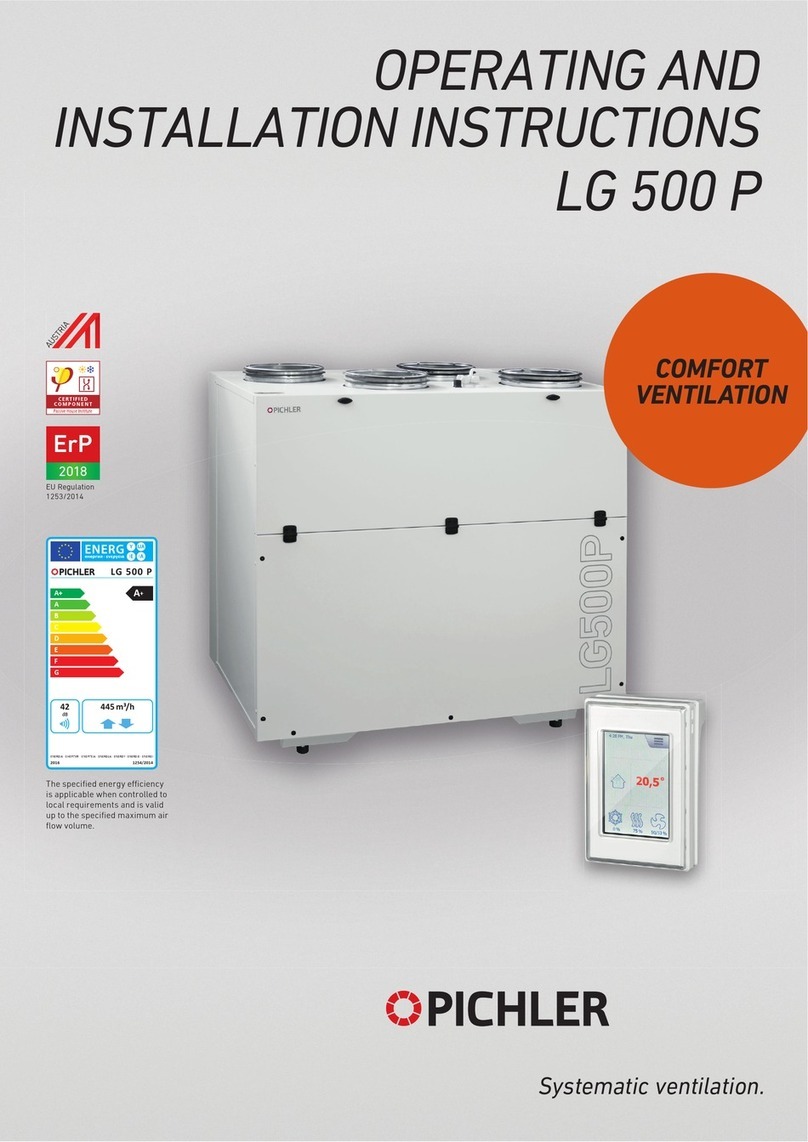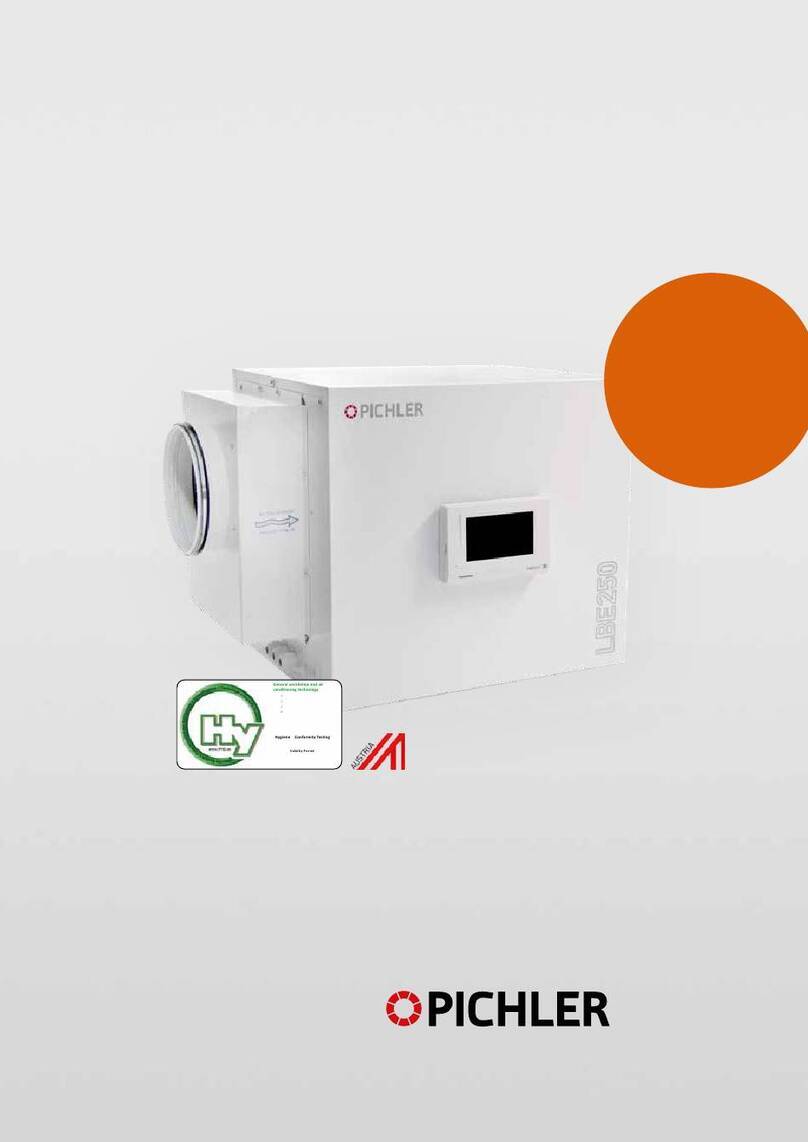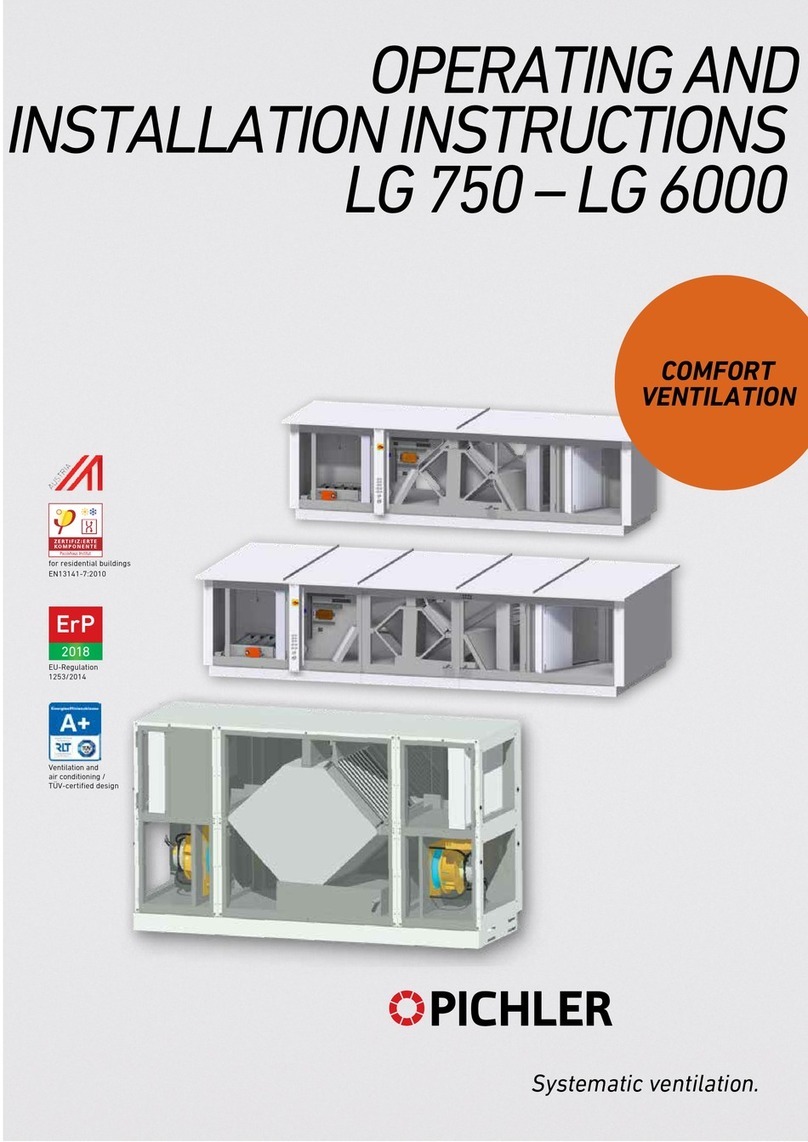
Contents
OPERATING AND INSTALLATION INSTRUCTIONS LG 750 - LG 6000 PAGE 2
Introduction.......................................................................................................................................................................4
1 General .................................................................................................................................................................4
1.1 Designated use.....................................................................................................................................................5
1.2 Liability...................................................................................................................................................................5
1.3 Warranty................................................................................................................................................................5
1.4 Warranty provisions.............................................................................................................................................5
2 Safety ....................................................................................................................................................................6
2.1 Symbols used in this document ....................................................................................................................6
2.2 Safety regulations..............................................................................................................................................6
2.2.1
General ....................................................................................................................................................................................6
2.2.2
Setting up the unit................................................................................................................................................................7
2.2.3
Electrical connections.........................................................................................................................................................7
2.2.4
Plant operation......................................................................................................................................................................8
3 Ventilation system functionality ....................................................................................................................8
3.1 System description.............................................................................................................................................. 8
3.2 System extensions for frost protection..............................................................................................................9
3.2.1
Frost protection via heat exchanger bypass .......................................................................................................................9
3.2.2
Frost protection via water pre-heating exchanger (optional) ..........................................................................................10
3.2.3
Frost protection via electric pre-heating exchanger (optional)...............................................................................12
3.3 Optional: System extension for external auxiliary heating.......................................................................... 14
3.3.1
Post heating via pumped hot water re-heating exchanger (PWW-NHR)...............................................................14
3.3.2
Re-heating using electrical heating .......................................................................................................................16
3.4 Optional: System extension for cooling ......................................................................................................... 18
3.4.1
Cooling with water cooling exchanger...................................................................................................................18
3.4.2
DX cooling (cooling unit) .......................................................................................................................................19
3.5 Heat exchanger................................................................................................................................................. 19
3.6 Optional: Demand-driven plant operation...................................................................................................... 20
3.6.1
Constant CO2 value..............................................................................................................................................20
3.6.2
Fan optimiser.........................................................................................................................................................20
3.6.3
GreenZone/PI zone modules, PI optimisers..........................................................................................................20
3.7 Optional: Building automation - networking................................................................................................... 20
4 Ventilation unit ................................................................................................................................................ 21
4.1 Description......................................................................................................................................................... 21
4.2 Unit configuration with subassemblies Series LG 750 – LG 6000............................................................. 22
4.3 Technical data Series LG 750 to LG 6000.................................................................................................... 22
4.4 Series LG 750 – LG 6000 versions................................................................................................................ 23
4.4.1
Modular units series.............................................................................................................................................................23
4.4.2
4.5 Compact units series System Mono-Case........................................................................................................................23
Air volume flow characteristics – external pressure increase: Without constant flow
volume function..................................................................................................................................................24
5 Control units....................................................................................................................................................25
5.1 General information .......................................................................................................................................... 25
5.2 Operator control unit PI-HMI............................................................................................................................ 25
5.2.1 Operation............................................................................................................................................................................... 25
5.2.2
Fan speed ............................................................................................................................................................................. 25
5.2.3
Temperature..........................................................................................................................................................................26
5.2.4
Settings..................................................................................................................................................................................26
5.2.5
Installation on flat surface ....................................................................................................................................................32
5.2.6
Installation in wall box/panel front...................................................................................................................................... 32
5.2.7
Modbus connection.............................................................................................................................................................. 33
5.2.8
Modbus RJ12 6P4C............................................................................................................................................................. 33
5.2.9
Modbus screw terminals...................................................................................................................................................... 33
5.2.10
Technical data....................................................................................................................................................................... 34
5.2.11
Service and maintenance.................................................................................................................................................... 34
5.3 Operator control unit “Pichler handheld terminal”.........................................................................................35
5.3.1
Display & operation.............................................................................................................................................................. 35








































